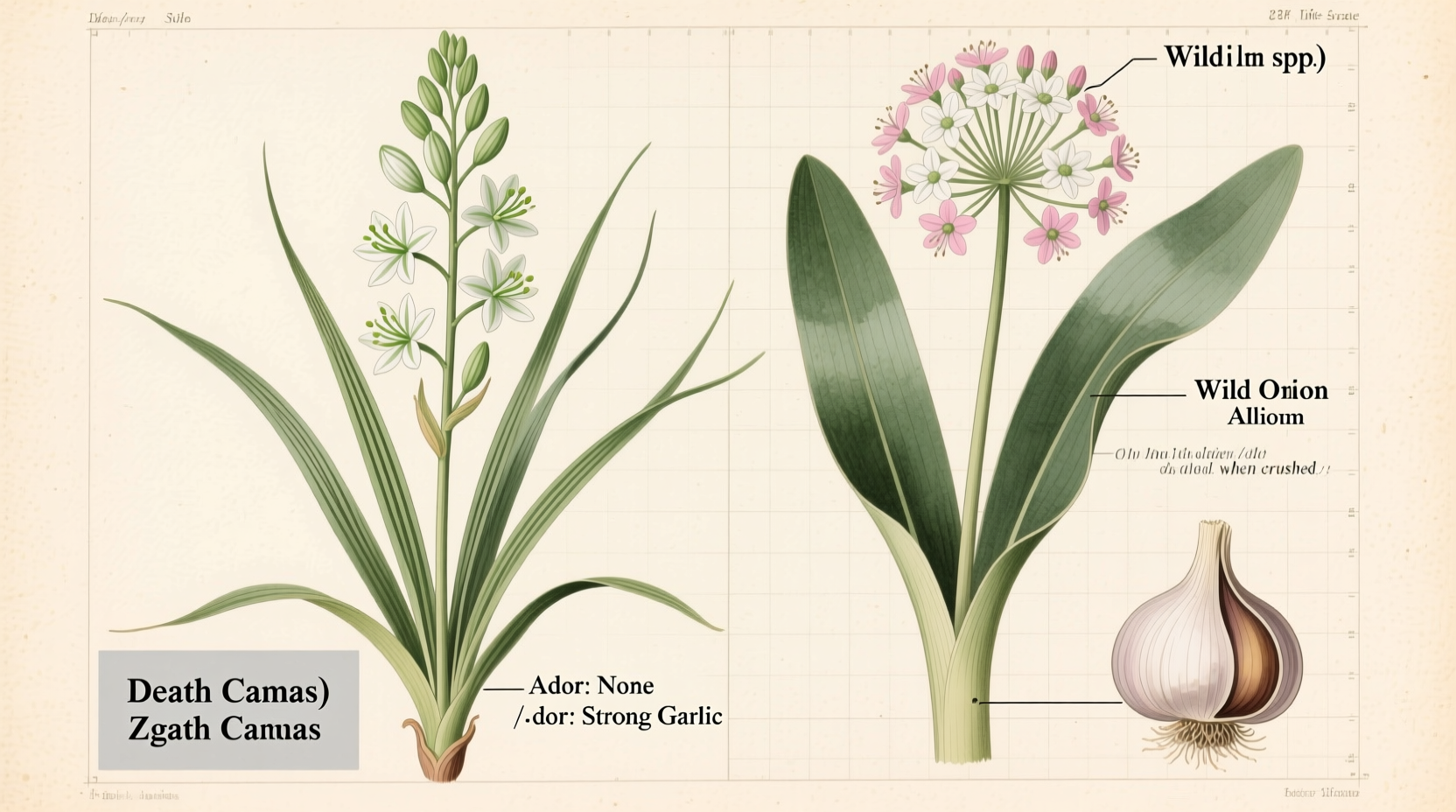"Blind onion" isn't a recognized edible onion variety in Vancouver, WA. The term typically refers to either failed onion bulbs in gardening or, more dangerously, to Death Camas (Zigadenus venenosus) - a highly poisonous plant native to Southwest Washington that's frequently mistaken for edible wild onions. Never consume unidentified plants in this region due to potentially fatal risks.
When Vancouver, WA residents search for "blind onion," they're often encountering dangerous misinformation. This term creates confusion between actual edible plants and one of the Pacific Northwest's most toxic native species. Let's clarify exactly what you're dealing with in our local ecosystem and how to stay safe while gardening or foraging.
Understanding the "Blind Onion" Misconception
The phrase "blind onion" causes significant confusion in Southwest Washington gardening circles. In reality, it describes two completely different scenarios:
| "Blind Onion" Context | Actual Identity | Risk Level in Vancouver, WA |
|---|---|---|
| Gardening failure | Onion plants that didn't form bulbs | Low (wasted crop) |
| Wild plant identification | Death Camas (Zigadenus venenosus) | Critical (potentially fatal) |
Washington State University Extension confirms that Death Camas grows abundantly in Clark County meadows and is responsible for numerous livestock poisonings annually. The plant's onion-like appearance but complete lack of onion scent creates deadly confusion during spring foraging season.
Why Vancouver, WA Residents Must Exercise Extreme Caution
Our region's unique ecosystem creates perfect conditions for dangerous plant misidentification. According to the Pacific Northwest Weed Management Handbook, Death Camas thrives in the same moist meadows where edible camas (Camassia quamash) and wild onions (Allium spp.) grow.
The critical differences matter for your safety:
- Scent test: True wild onions emit a distinct onion/garlic aroma when crushed; Death Camas has no scent
- Flower structure: Death Camas has star-shaped white flowers with greenish glands; edible camas has blue-purple flowers
- Bulb characteristics: Death Camas bulbs have a bitter, soapy taste; edible varieties have characteristic onion flavors

Vancouver-Specific Foraging Safety Guidelines
Clark County's diverse habitats make proper plant identification essential. The Southwest Washington Native Plant Society reports that misidentification incidents peak each April-May when both Death Camas and edible varieties bloom simultaneously.
If you're gardening or foraging in Vancouver:
- Never rely on visual identification alone - Always perform the scent test with multiple plant parts
- Consult local experts - Contact WSU Clark County Extension (360-423-3413) for free plant identification
- Avoid harvesting near wetlands - Death Camas prefers moist areas where edible varieties also grow
- Teach children the rule - "When in doubt, throw it out" applies doubly in our region
The Washington State Department of Health documents multiple emergency room visits each year from Vancouver-area residents who mistakenly consumed Death Camas bulbs thinking they were wild onions. These incidents often require hospitalization due to the plant's potent alkaloids.
Safe Alternatives for Vancouver Gardeners
If you're interested in growing onions locally, focus on varieties proven safe for Southwest Washington's climate:
- Recommended varieties: Walla Walla sweet onions, Copra storage onions, or Evergreen bunching onions
- Planting schedule: Start seeds indoors February-March for transplanting in April
- Soil requirements: Well-draining soil with pH 6.0-7.0 (common in Vancouver's volcanic soil)
For those interested in native edible plants, WSU Extension's Foraging Safety Guide provides Vancouver-specific recommendations for safe harvesting of camas, salmonberry, and other regional edibles - with clear warnings about Death Camas look-alikes.
Local Resources for Plant Identification in Vancouver
When uncertainty exists, these Vancouver-based resources provide expert verification:
- WSU Clark County Master Gardeners Plant Clinic (open Wednesdays 1-4PM at 3601 NE 58th Ave)
- Fort Vancouver National Historic Site's Native Plant Program
- Clark County Parks' guided foraging walks (offered May-June with certified botanists)
Remember: No edible plant in our region is worth risking your life over. When foraging in Vancouver's natural areas, always follow the three-verification rule - confirm identification through scent, visual characteristics, and expert consultation before consumption.











 浙公网安备
33010002000092号
浙公网安备
33010002000092号 浙B2-20120091-4
浙B2-20120091-4